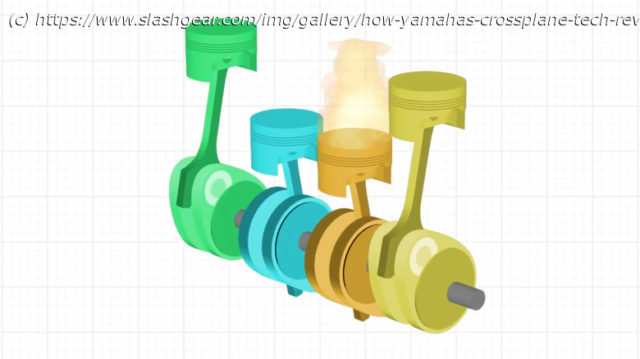Crossplane crankshaft design from Yamaha helped innovate sportbikes in the late 2000s by dialing in the riding experience to feel more planted and controllable.
Yamaha’s crossplane crankshaft, first seen on the 2009 YZF-R1, rewired how liter-class bikes felt under throttle. Traditional inline-four engines fire two pistons simultaneously at 180-degree intervals, causing torque pulses that can unsettle the chassis under aggressive inputs. Yamaha’s crossplane (not to be confused with flat-plane) configuration staggers the firing order at 90-degree intervals. That means the engine delivers torque more evenly, especially when cornering.
What riders notice is a smoother, more predictable drive. When you roll on the throttle mid-corner, the rear tire hooks up instead of spinning unpredictably. That stability boosts confidence, letting riders push harder with less risk of high-siding the bike.
The engine doesn’t just behave differently, it sounds different too. The uneven firing intervals produce a deep, V4-like growl instead of a high-rev scream. Although it resulted in some of the best-sounding motorcycles ever made, the sound is a byproduct, not the purpose.
Домой
United States
USA — IT How Yamaha's Crossplane Tech Revolutionized High-Performance Motorcycles






